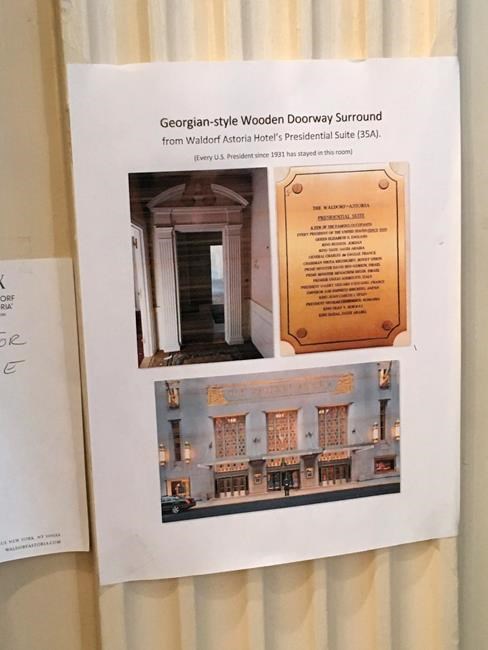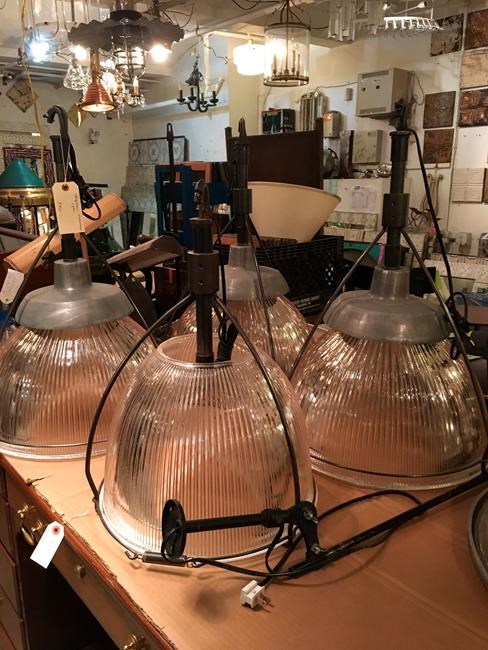Salvage shops offer sustainable decor with a story
Advertisement
Read this article for free:
or
Already have an account? Log in here »
To continue reading, please subscribe:
Monthly Digital Subscription
$1 per week for 24 weeks*
- Enjoy unlimited reading on winnipegfreepress.com
- Read the E-Edition, our digital replica newspaper
- Access News Break, our award-winning app
- Play interactive puzzles
*Billed as $4.00 plus GST every four weeks. After 24 weeks, price increases to the regular rate of $19.00 plus GST every four weeks. Offer available to new and qualified returning subscribers only. Cancel any time.
Monthly Digital Subscription
$4.75/week*
- Enjoy unlimited reading on winnipegfreepress.com
- Read the E-Edition, our digital replica newspaper
- Access News Break, our award-winning app
- Play interactive puzzles
*Billed as $19 plus GST every four weeks. Cancel any time.
To continue reading, please subscribe:
Add Free Press access to your Brandon Sun subscription for only an additional
$1 for the first 4 weeks*
*Your next subscription payment will increase by $1.00 and you will be charged $16.99 plus GST for four weeks. After four weeks, your payment will increase to $23.99 plus GST every four weeks.
Read unlimited articles for free today:
or
Already have an account? Log in here »
Hey there, time traveller!
This article was published 30/10/2019 (2187 days ago), so information in it may no longer be current.
Two of the hottest trends in home decor are sustainability and authenticity. No wonder architectural salvage shops are busy.
Homeowners love features that come with a story, says Rich Ellis, publisher of Architectural Salvage and Antique Lumber News.
“When you can point to your floor and say it came from an old shoe factory in Connecticut, for example, that’s a big attraction,” he says.

There are between 500 and 700 architectural salvage businesses across the country, and business has been good, he says.
“It’s about both history and sustainability,” says Madeline Beauchamp of Olde Good Things, one of the oldest architectural salvage businesses in the country, with one shop in Los Angeles, two retail warehouses in Scranton, Pennsylvania, three stores in New York City and a flagship store to open soon in Midtown Manhattan.
Adds Lorna Aragon, home editor at Martha Stewart Living, says people are looking for quality and “want their homes to be original. And of course the whole ‘reduce, reuse, recycle’ aspect of things plays into it as well.”
While some items are sold just as found when they were salvaged from renovation sites, others have been modified for home use. There are Paris street lamps reconfigured as large pendant lamps to hang above kitchen islands or in loft apartments, and window frames from historical buildings like New York City’s Domino sugar factory or Flatiron building, now fitted with mirrors to be hung on walls. Tin ceiling tiles from old New York buildings are also sometimes fitted with mirrors, or framed and hung as is, says Beauchamp.
“One customer came in for a gargoyle, to be incorporated in their garden area,” she adds. Her customers tend to be designers, architects and those trying to update their homes with unique decor that has a sense of history.
Olde Good Things sells everything from vintage doorknobs to huge stained-glass panels that were once part of the American Airlines terminal at John F. Kennedy Airport in New York. There are enormous chandeliers that once hung in a Broadway theatre, and, from the old Waldorf-Astoria Hotel, dishes, fireplace mantels and the elegant doorframe of the historic hotel’s presidential suite.
Stuart Grannen runs the upscale Architectural Artifacts in Chicago, which deals in rare items favoured by restaurants, bars and hotels. “These days, individuals might have one really great centerpiece item and live with that,” he says. “The days when someone would come in and buy 50 doorknobs are done.”
Most of his clients, he says, are businesses looking for huge, beautiful counters, showcases, consoles or back bars.
“When I salvage things, it might be the whole facade of a theatre, or a giant chandelier,” he says.
But Aragon counters that items like vintage plumbing, sinks and tubs continue to be popular.

In addition to architectural elements, salvaged lumber is also a hot item in many salvage shops, sometimes transformed into things like dining tables, ready-made, custom-ordered or sold as is.
“The antique lumber side of things is very strong,” says Ellis, for table tops and other decor elements.
Antique bricks and paving stones are also being repurposed for, say, a decorative wall.
“Things like those wonderful old wide floorboards and barn siding have been popular for some time,” notes Aragon.
Ellis traces this history of architectural salvage to the 1960s, and says it has been growing slowly but steadily ever since but really became mainstream in the 1990s.
While the first generation of architectural salvage business owners is starting to retire and close, a new generation is stepping in, he says.
“That desire for elements with a sense of history and a great story behind them is not going away anytime soon,” says Ellis.

